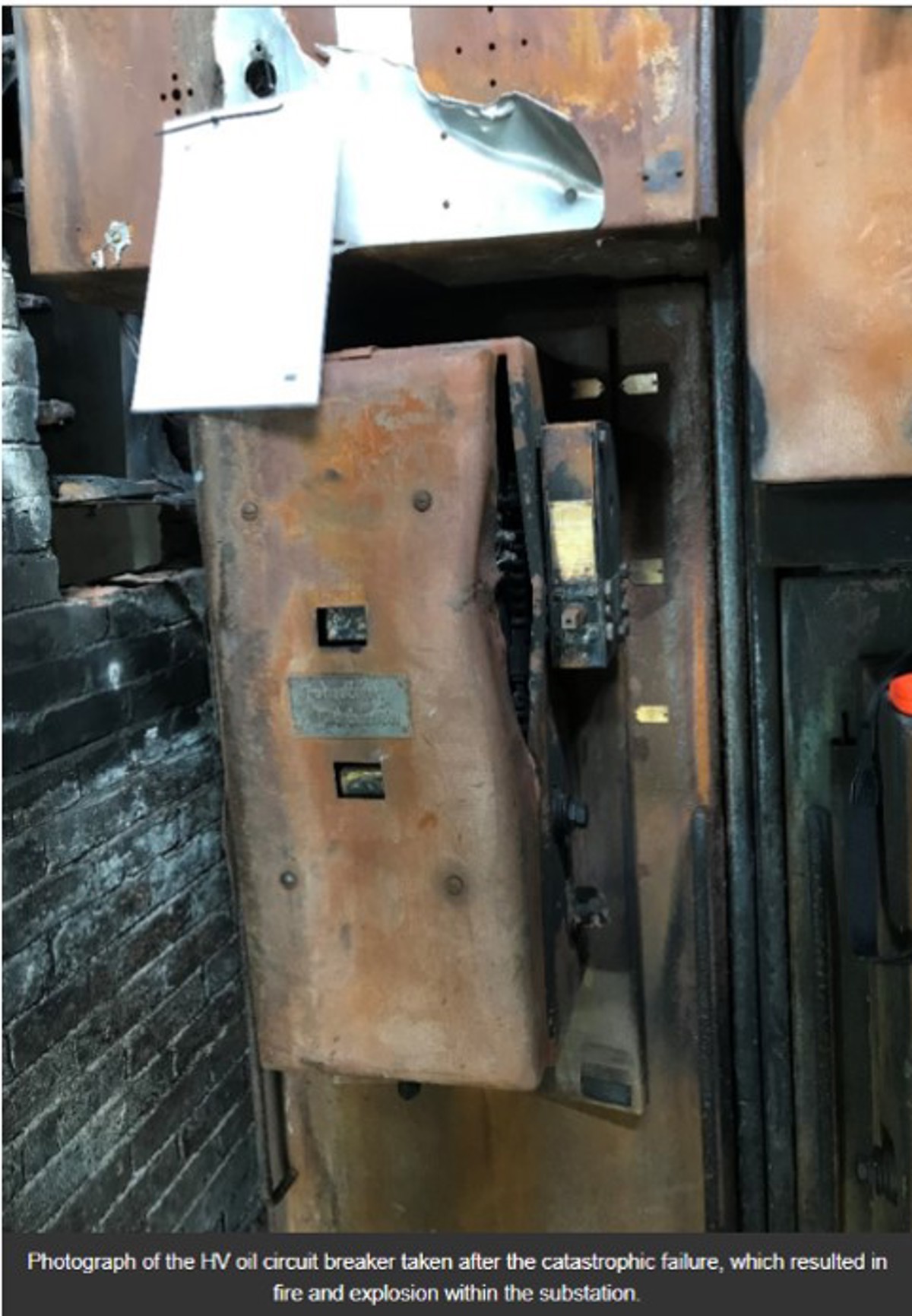UK HSE: Lubrication of circuit breakers – safety notice
- Safety Flash
- Published on 28 October 2021
- Generated on 8 December 2025
- IMCA SF 29/21
- 3 minute read
Jump to:
The UK Health and Safety Executive (HSE) has published a Safety Notice regarding the lubrication of circuit breakers in both HV and LV equipment.
What happened?
The key issues covered are the incorrect use and application of lubrication on HV and LV circuit breakers.
There was a catastrophic failure and explosion of an HV circuit breaker leading to a fire which could have resulted in fatal injuries.

What went wrong?
The HSE report noted that:
“Maintenance of HV and LV circuit breakers typically involves both the cleaning and lubricating of the operating mechanism. The HSE investigation found that the same physical product was used for both maintenance activities, but evidence shows the product was in fact only suitable for cleaning and NOT lubrication.
"This situation may have arisen because of the availability of different products, (for different purposes), within the same product range, or changes to the products composition over time whilst retaining the original name. It is essential that the correct product is used for each task.”
What was the cause?
- ‘Stiction’ in the failed circuit breaker may have been a result of an incorrect aerosol based multi-purpose lubricant being used on the circuit breaker.
- Independent forensic analysis showed that the multipurpose lubricant used during the maintenance of the failed circuit breaker prior to the incident, evaporated by 75% of its original weight within 2 weeks of application.
- The analysis concluded that for this reason, multi-purpose lubricants containing solvents (e.g. white spirit) are unsuitable for use as a lubricant of this type of HV and LV switchgear.
Actions
- Review maintenance procedures associated with cleaning and lubrication of HV and LV circuit breakers.
- Check that the maintenance procedure ensures that the manufacturer instructions on cleaning and lubrication of the circuit breaker mechanism are followed at appropriate intervals, including the selection and application of the correctly specified lubricants (typically this will be two separate types of product).
Members may wish to refer to:
- IMCA C010 High voltage training: A syllabus for training offshore workers involved with high voltage equipment
- IMCA HSS031 Offshore vessel high voltage safety
- IMCA R005 Guidance on safety procedures for isolation of ROV high voltage equipment (above 1 kV)
Related Safety Flashes
-
IMCA SF 33/16
6 December 2016
-
IMCA SF 04/09
2 April 2009
IMCA Safety Flashes summarise key safety matters and incidents, allowing lessons to be more easily learnt for the benefit of the entire offshore industry.
The effectiveness of the IMCA Safety Flash system depends on the industry sharing information and so avoiding repeat incidents. Incidents are classified according to IOGP's Life Saving Rules.
All information is anonymised or sanitised, as appropriate, and warnings for graphic content included where possible.
IMCA makes every effort to ensure both the accuracy and reliability of the information shared, but is not be liable for any guidance and/or recommendation and/or statement herein contained.
The information contained in this document does not fulfil or replace any individual's or Member's legal, regulatory or other duties or obligations in respect of their operations. Individuals and Members remain solely responsible for the safe, lawful and proper conduct of their operations.
Share your safety incidents with IMCA online. Sign-up to receive Safety Flashes straight to your email.